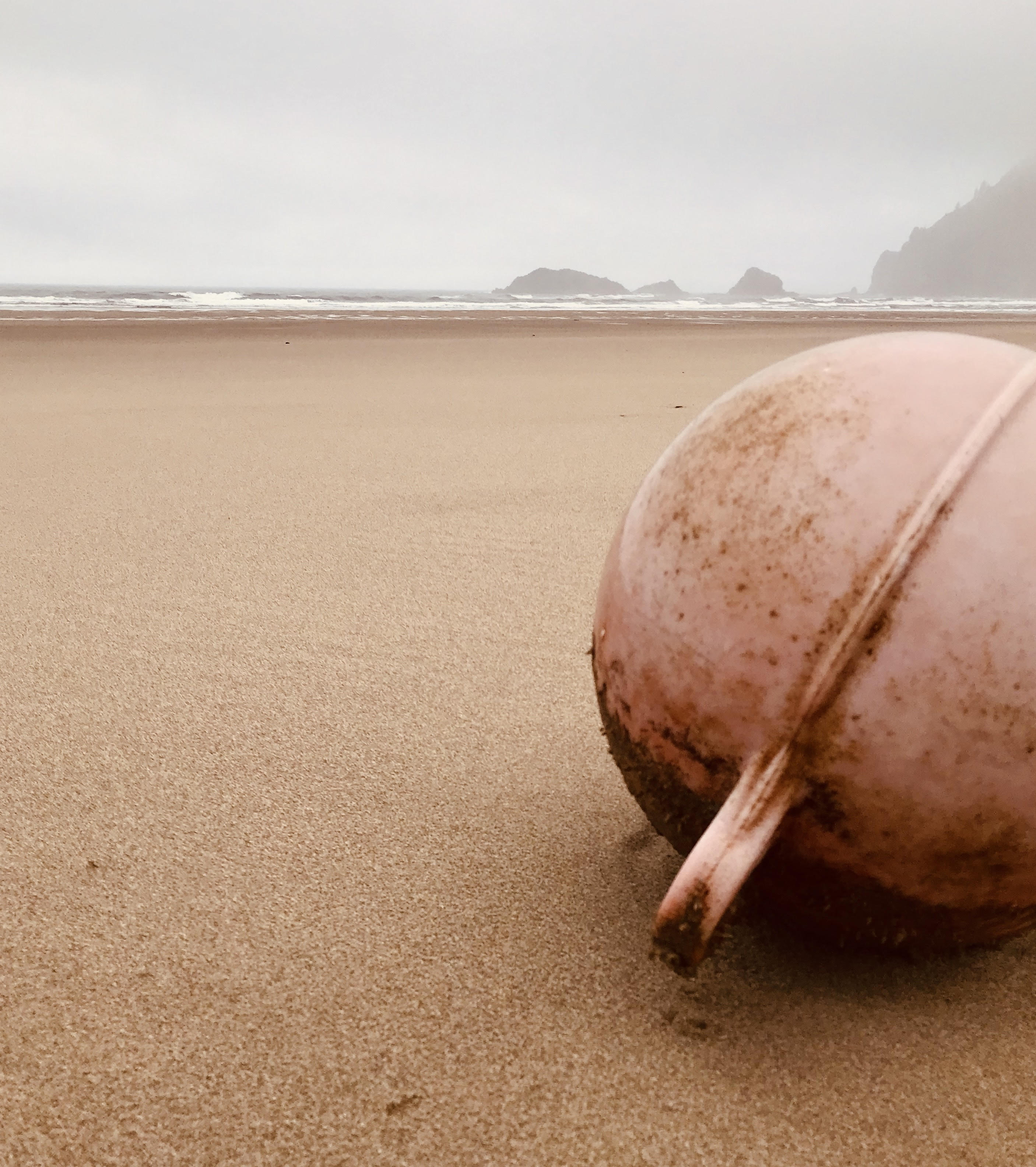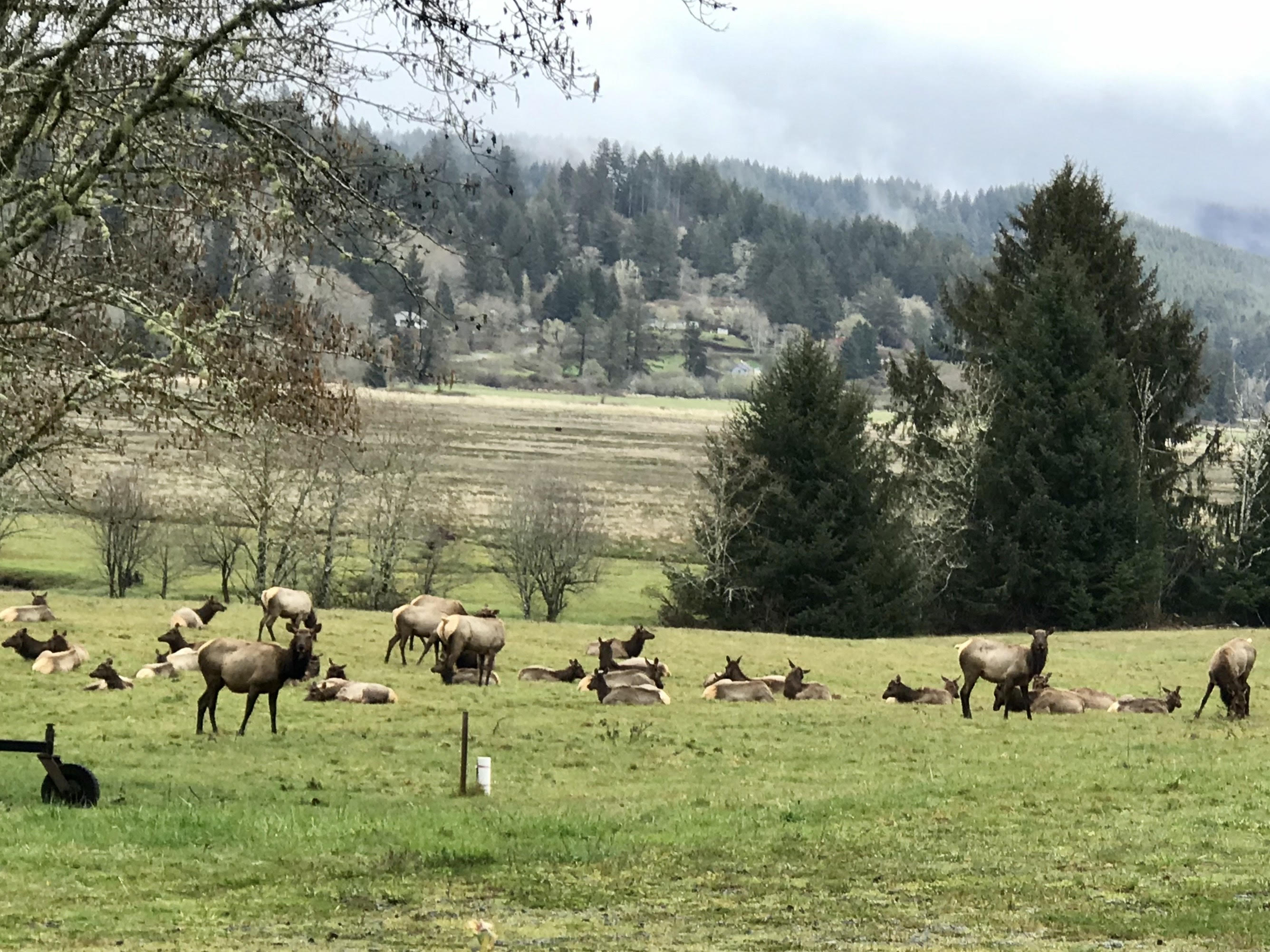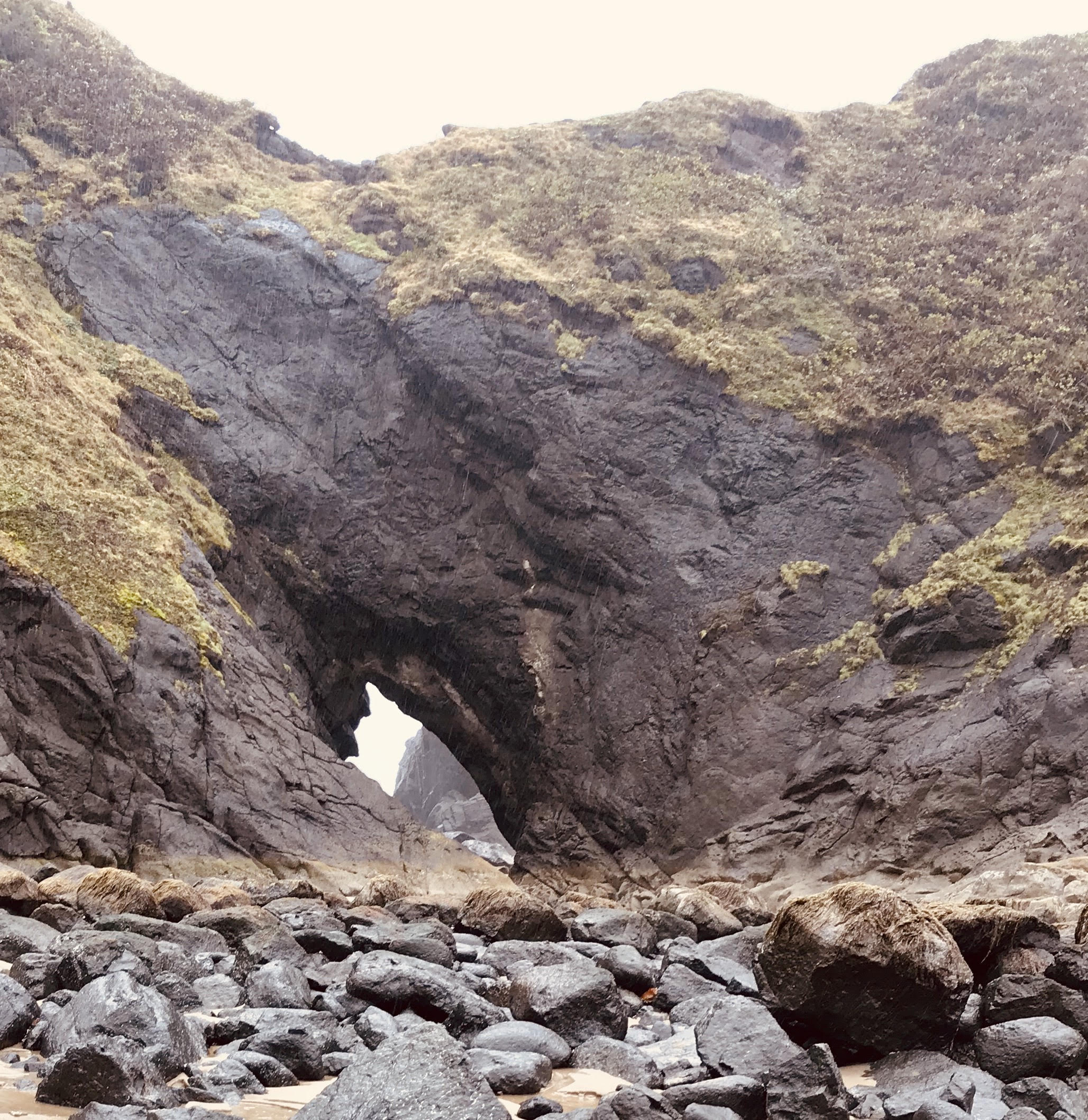| Entry no. 2 – April 3, 2020 By Scotty Evens, Site Manager & Ferry Captain Time stands still
 This week at Westwind has had me thinking about the march of time. I was joined for part of the day by Duncan Berry, one of the founders of the Westwind Stewardship Group. We were seeking out wood for an art project. This project is to tell a story of salmon and interconnectedness. Duncan is also a Japanese printmaker and needed some rounds to print with. What we found were time machines and true wonders to behold. This week at Westwind has had me thinking about the march of time. I was joined for part of the day by Duncan Berry, one of the founders of the Westwind Stewardship Group. We were seeking out wood for an art project. This project is to tell a story of salmon and interconnectedness. Duncan is also a Japanese printmaker and needed some rounds to print with. What we found were time machines and true wonders to behold.As I cut into this piece of Douglas fir that had washed up on the beach ages ago, it got me thinking. What was inside and what was the story? This piece of wood was 283 years old at the time of his death. Let that sit in your mind for a bit. Now imagine its journey from standing sentinel to dead snag, to its journey down a river or to have fallen into the ocean from the coastline. Imagine its path to Westwind in the ocean where it found its resting place. It must’ve been an incredible journey.  This time of year at Westwind we get visitors from far away lands. The Kuroshio current that sweeps north up the coast of Japan and makes its way to the west coast of North America brings us these visitors. The storms and the strong prevailing winds push floats ashore. Most are plastic nowadays but some still are glass from long ago. These same storms have littered the beach with mussels that were ripped from the cliffs. The birds must view this certainly as a bounty for them to nourish themselves. The mating pair of Canada geese are back nesting on the the saddle near the point off of the eye of the needle. They have been an enduring presence the past few springs. This time of year at Westwind we get visitors from far away lands. The Kuroshio current that sweeps north up the coast of Japan and makes its way to the west coast of North America brings us these visitors. The storms and the strong prevailing winds push floats ashore. Most are plastic nowadays but some still are glass from long ago. These same storms have littered the beach with mussels that were ripped from the cliffs. The birds must view this certainly as a bounty for them to nourish themselves. The mating pair of Canada geese are back nesting on the the saddle near the point off of the eye of the needle. They have been an enduring presence the past few springs.This week we were paid a visit by two elk herds. The Cascade head herd swam over to feed in and around Tillicum and in the estuary as they are want to do a couple of times per year, no doubt lured by the green seductive grass and sedge. The Westwind herd has been hanging at Fraser farm and along the road to camp feeding off of the new growth along the edge.
 The Willows and the Alders have made their presence known. The Willows with its delicate yellow The skunk cabbage with a pungent odor shall finish out this week. It too is an early spring bloomer that plays important roles: one as a source of energy for early pollinators, and two as food for the elk in the heat of August and September. They key in on this food source as they seek the swampy areas to beat the heat, roll in the mud and snack on its large green leaves.
Westwind provides so much and on so many levels to so many creatures and plants. I am truly grateful.
|
||||
|
|


 flowers and the Alder with its droopy purple staining flowers that fall in such great numbers on the ground. These flowers from the Alder in turn become seed cones that form over the next few months, to open on sunny winter and early spring days spreading millions of seeds. This adaptation makes them a major player in the forest’s ecology, for they are some of the first to pioneer after fire, disturbance and logging. They help ensure the forest will continue to live.
flowers and the Alder with its droopy purple staining flowers that fall in such great numbers on the ground. These flowers from the Alder in turn become seed cones that form over the next few months, to open on sunny winter and early spring days spreading millions of seeds. This adaptation makes them a major player in the forest’s ecology, for they are some of the first to pioneer after fire, disturbance and logging. They help ensure the forest will continue to live.